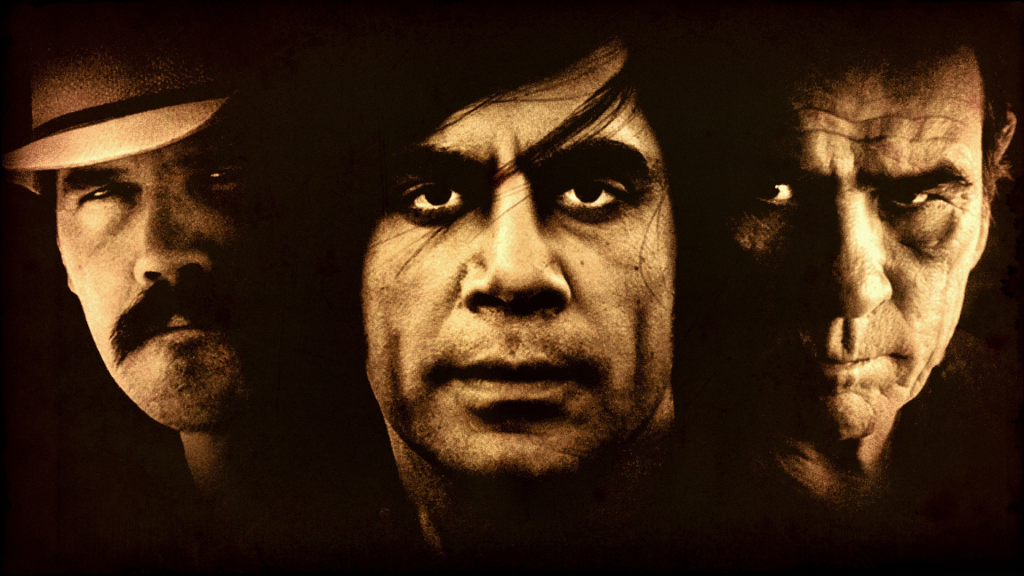When the Coen brothers announced their return to No Country for Old Men, many wondered whether such a brutal, unflinching story could be told again with the same resonance. The 2007 original, based on Cormac McCarthy’s novel, became an instant classic — a chilling meditation on violence, fate, and the fragile illusion of justice. Now, in 2026, Ethan and Joel Coen revisit this universe, expanding it into an even more haunting saga, with an all-star cast led by Keanu Reeves, Javier Bardem, and Josh Brolin.
This new chapter does not attempt to erase the shadow of its predecessor. Instead, it embraces the silence, the dread, and the suffocating inevitability that made the story unforgettable. It is not a remake, nor a direct sequel — it is a reimagining, a return to a timeless allegory about greed, survival, and the darkness embedded in the human soul.
A Hunter’s Fatal Discovery
The story begins on the barren plains of the Texas borderlands, where the desert stretches endlessly, mirroring both emptiness and danger. Keanu Reeves takes on the role of a rugged hunter, a man shaped by solitude, instinct, and an understated resilience. While tracking game, he stumbles upon a grisly scene: bodies scattered across the desert, pickup trucks riddled with bullets, and the stench of gunpowder still hanging in the air.
Among the chaos, he finds a suitcase containing over two million dollars — a fortune that could change his life forever. But in taking the money, he also sets into motion a relentless chain of violence. His choice is not just about greed; it becomes a gamble with fate, a test of morality against forces far beyond his control.

The Return of Death Incarnate
No No Country for Old Men story could exist without Anton Chigurh, the embodiment of inevitable doom. Javier Bardem, whose portrayal earned him an Academy Award nearly two decades ago, reprises the role with even more chilling precision. His Anton is not just a hitman — he is a philosophical specter, a force of nature governed by his own twisted sense of logic.
Chigurh’s weapon of choice, the captive bolt pistol, returns as a terrifying symbol of his detachment from human life. Yet what makes him most terrifying is not the violence itself, but the calm certainty with which he delivers it. His interactions, whether flipping a coin for a stranger’s life or silently stalking his prey, remind us that chance and inevitability are inseparable.
The Man Caught in the Middle
Josh Brolin delivers a performance steeped in quiet intensity. His character — caught between survival and doom — becomes a vessel for the audience’s dread. Every decision he makes, every turn he takes, pulls him deeper into the abyss. Unlike the larger-than-life archetypes around him, he feels achingly human, vulnerable to mistakes, pride, and desperation.
The tension between Reeves’s hunter and Brolin’s desperate survivor is one of moral complexity. They are not clear heroes or villains — only men navigating the brutal consequences of choices made under duress.

Themes of Fate, Morality, and Violence
At its core, No Country for Old Men (2026) is not about action, but inevitability. The Coen brothers, true to their vision, use silence and stillness to amplify dread. Every wide shot of the Texas desert becomes a metaphor for loneliness and inevitability. The violence is sudden, cold, and unsentimental — stripped of glamour, leaving only shock and emptiness in its wake.
The film asks difficult questions: Is morality an illusion in a world ruled by greed and violence? Are our choices truly our own, or do they belong to chance and fate? The hunter’s greed, Chigurh’s ruthless order, and the survivor’s desperate choices all weave together into a tapestry of existential despair.
Why Keanu Reeves?
The casting of Keanu Reeves is one of the most fascinating aspects of this new adaptation. Known for his stoic charisma and ability to embody both vulnerability and quiet strength, Reeves brings a different energy to the role. His hunter is not a guns-blazing hero, but a man defined by restraint — someone who believes he can outwit fate, only to discover that fate has already chosen its path.
Reeves’s understated performance contrasts beautifully with Bardem’s terrifying gravitas and Brolin’s raw humanity. Together, the trio create a triangle of tension that drives the narrative forward.

A Return to the Coens’ Signature Style
What makes No Country for Old Men unforgettable is not only its story, but also its craft. The Coens’ 2026 film continues their tradition of minimalism, letting silence speak louder than words. Dialogue is sparse, but every pause, every look, carries weight.
The cinematography captures the stark beauty of the Texas border — vast skies, empty highways, lonely motels, and landscapes that feel both eternal and oppressive. The score, or rather the lack of one, sharpens the unease, allowing every footstep, gunshot, and gust of wind to echo like fate itself.
A Brutal Meditation
In the end, No Country for Old Men (2026) is not a film about answers, but about inevitability. It reminds us that money, power, and survival are fragile illusions when set against the larger truth of mortality. The hunter’s greed, Chigurh’s cruelty, and the survivor’s despair all collapse into the same conclusion: that violence is not an exception in human history, but a constant shadow.
The Coen brothers deliver not just a return, but an expansion of McCarthy’s haunting vision — a brutal meditation on chance, morality, and the inevitability of violence. It is a film destined to spark debate, unsettle audiences, and stand as a worthy continuation of one of cinema’s most unforgettable sagas.